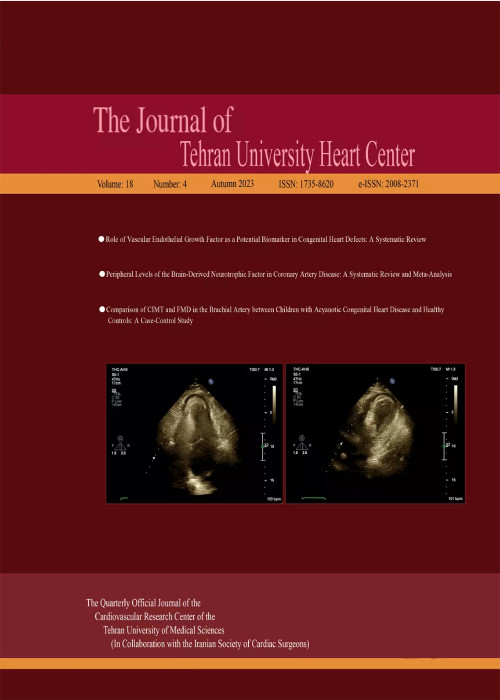Evaluation of Longitudinal Right Ventricular Mechanical Dyssynchrony before and Early after Cardiac Resynchronization Therapy: A Strain Imaging Study
Author(s):
Abstract:
Background
The right ventricular (RV) dyssynchrony has not been studied extensively and the existing literature has established the effect of cardiac resynchronization therapy (CRT) on the left ventricular (LV) dyssynchrony, but there is a dearth of data on the effect of CRT on the forgotten ventricle. We sought to evaluate the presence of mechanical right ventricular dyssynchrony in patients with systolic heart failure, selected for CRT, and track the changes early afterward utilizing the longitudinal strain analysis.Methods
Thirty-six patients with severe left ventricular systolic dysfunction, candidated for CRT, were enrolled in this study. Mechanical dyssynchrony was assessed using tissue Doppler echocardiography. The time interval between the onset of the QRS to the peak systolic longitudinal strain at the RV free wall and the septum was obtained. The RV mechanical delay was calculated as the absolute value of the difference in the time-to-peak measurements between the RV and septum. The RV dyssynchrony was defined as the calculated delay in strain imaging, which was ± 2 SD above the mean value for the control subjects (20 cases). The RV function was evaluated using the RV fractional area change (RVFAC), tricuspid annulus plane systolic excursion (TAPSE), and peak systolic strain values of the RV free wall. Four to 7 days after CRT implantation, echocardiographic reevaluations were done. Results
The calculated cut-off value for the RV dyssynchrony was 41.5 msec, according to which the pre-CRT analysis specified two patient groups: Group 1 (16 cases) with RV dyssynchrony and Group 2 (20 patients) without RV dyssynchrony. Significant improvement in the RV dyssynchrony was noted in Group 1 after CRT (30 ± 28.9 msec vs. 68.8 ± 21 msec; p value < 0.01 vs. 14 ± 10 msec vs. 19 ± 16.5 msec; p value = 0.18 respectively). A significant correlation was found between the severity of the RV dyssynchrony and peak systolic strain in the RV free wall (r = -0.5; p value < 0.05). No significant relation was found between the RV dyssynchrony and right ventricle fractional area change (RVFAC), LV mechanical dyssynchrony, time-to-peak systolic strain in the RV free wall, QRS width, or morphology. In Group 1, the peak systolic strain increased insignificantly (p value = 0.15 for the basal segment; p value = 0.20 for the mid segment). A moderately significant correlation was found between the RV mechanical delay before CRT vs. the post-CRT values (r = 0.4; p value = 0.01). Conclusion
Early after CRT, the RV mechanical delay can improve and the significant improvement is seen in patients with baseline RV mechanical dyssynchrony.Language:
English
Published:
The Journal of Tehran University Heart Center, Volume:6 Issue: 1, Jan 2011
Page:
24
magiran.com/p824771
دانلود و مطالعه متن این مقاله با یکی از روشهای زیر امکان پذیر است:
اشتراک شخصی
با عضویت و پرداخت آنلاین حق اشتراک یکساله به مبلغ 1,390,000ريال میتوانید 70 عنوان مطلب دانلود کنید!
اشتراک سازمانی
به کتابخانه دانشگاه یا محل کار خود پیشنهاد کنید تا اشتراک سازمانی این پایگاه را برای دسترسی نامحدود همه کاربران به متن مطالب تهیه نمایند!
توجه!
- حق عضویت دریافتی صرف حمایت از نشریات عضو و نگهداری، تکمیل و توسعه مگیران میشود.
- پرداخت حق اشتراک و دانلود مقالات اجازه بازنشر آن در سایر رسانههای چاپی و دیجیتال را به کاربر نمیدهد.
In order to view content subscription is required
Personal subscription
Subscribe magiran.com for 70 € euros via PayPal and download 70 articles during a year.
Organization subscription
Please contact us to subscribe your university or library for unlimited access!


